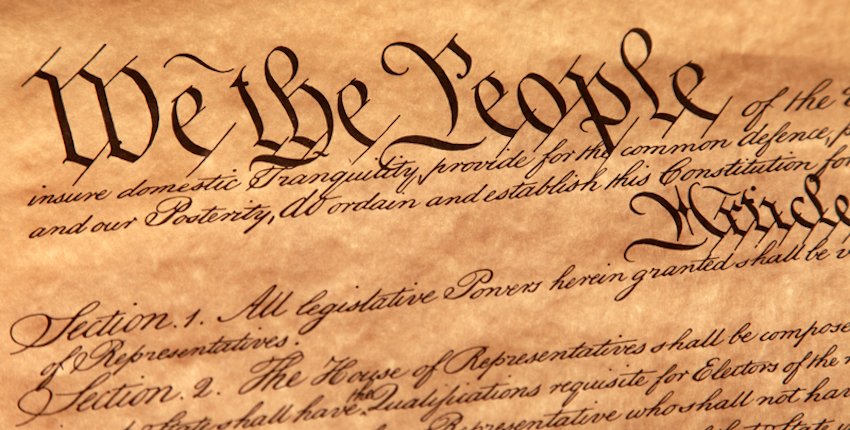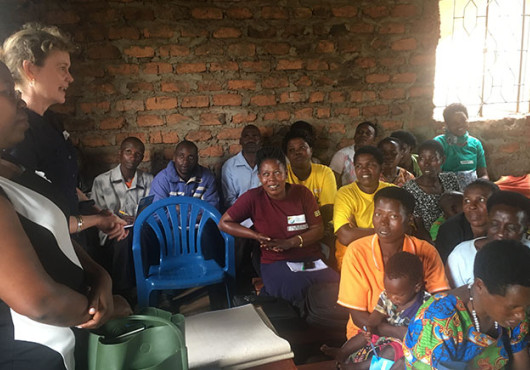
Many morally and ethically charged issues, such as gun control, the death penalty, abortion and the fairness of the criminal justice system, exist at the edge of the political and cultural space defined by the U.S. Constitution.
As a result, said Stephen Breyer, an associate justice of the U.S. Supreme Court, speaking at Harvard Medical School on April 11, the Constitution is “a frontier-drawing document.”
“It draws boundaries beyond which the legislature and the government cannot go,” he said.
“It’s cold and tough out on the frontier.” But the Constitution doesn’t tell the people what to do within that space or around its edges, Breyer said. “It’s up to them.”
Breyer’s 2018 Roger Allan Moore Lecture on Values and Medicine: Ethical, Religious, and Cultural Perspectives was a “powerful vision of the ability of a democracy to correct its errors,” said David Jones, A. Bernard Ackerman Professor of the Culture of Medicine at Harvard, who moderated the event.
During the talk, Breyer outlined the role of the Supreme Court in establishing the boundaries of the rule of law. He also spoke of the importance of vigorous, broad participation that he said is necessary to make the country’s experiment in democracy work, and to shape the country according to the values of its people.
“There have been lots of ups and downs in this country,” Breyer said.
The messiness of our U.S. democratic experiment, he said, is due in part to the great diversity of opinion in the country. But diversity, among the public and on the Court, is not a flaw, he said, it’s a strength that is built into the foundation of the nation.
When the premier chronicler of the birth of American democracy, Alexis de Tocqueville, traveled to the United States in the early years of the nation, Breyer said, the first thing he noticed was “the clamor” of disagreement ever present in the communities of the nascent republic. That diversity of perspectives, which has persisted through the centuries, helps us be our best, Breyer said.
The back and forth of disagreement, debate, and the development of shared understanding is also fundamental to the workings of the court, Breyer said.
He outlined the mechanics of how he and his fellow justices do the daily work of the Supreme Court, choosing about 80 cases to hear from among the more than 8,000 appeals they receive each year, reading briefs from as wide a variety of perspectives as possible, hearing oral arguments from claimants and discussing the cases among themselves, then writing, sharing and revising a series of memos, decisions, concurrences and dissenting opinions.
If you want to encourage civic discourse and collaboration across political and cultural divides, Breyer said, the answer that the Constitution provides is to talk with the people with whom you disagree.
“When you’re worried about divisions in public opinion—and, of course, I am—the first place you look is in the mirror,” Breyer said.
None of the institutions or laws of the nation are perfect, he added, and to improve them, its people need to participate in public life. The courts can’t do it alone, even the whole government together is not enough to make big changes, he said.
The Supreme Court’s 1954 decision in Brown v. Board of Education, which found segregated schools to be unconstitutional, still didn’t integrate schools, he said. Even though integration was now the law of the land, when the first Black students attempted to enter a white school in Little Rock, Arkansas, in 1957 they were met by an angry mob and the Arkansas National Guard. President Dwight D. Eisenhower called in the Army’s 101st Airborne Division to escort the nine high-school students into Central High School. Real change only began to take root thanks to wide and deep public participation, through the work of the Freedom Riders and the broader civil rights movement, he noted.
It’s also important for leaders of the executive and legislative branches to support decisions they don’t like, Breyer said. After the Bush v. Gore Supreme Court decision following the 2000 presidental election, Breyer noted, Democratic presidential candidate Al Gore supported the Court’s authority to decide the matter. Similarly, after four decisions concerning detainees at Guantanamo Bay found for the prisoners and against the government, President George W. Bush said that although he didn’t agree with the decisions, he would follow them.
“I can’t tell you how to lead your life, but I can tell you I hope very much you participate in public life,” Breyer said. He reached into his breast pocket and held up a copy of the Constitution. “Unless you do, this document won’t work.”
Born in San Francisco, Breyer studied at Stanford University, Magdalen College, Oxford, and Harvard Law School. He served as a law clerk to Justice Arthur Goldberg of the U.S. Supreme Court and as an assistant special prosecutor with the Watergate Special Prosecution Force, and then as chief counsel of the U.S. Senate Judiciary Committee. He was also a professor of law at Harvard Law, and a professor at the Harvard Kennedy School of Government. Breyer was appointed associate justice of the Supreme Court by President Clinton in 1994.
The Roger Allan Moore Lecture on Values and Medicine: Ethical Religious and Cultural Perspectives was established at HMS in memory of Roger Allan Moore, an alumnus of Harvard College and Harvard Law, secretary to the Harvard Medical Center, clerk to the Risk Management Foundation of the Harvard Medical Institutions and an attorney at Ropes & Gray in Boston. Since 1992, the HMS Department of Global Health and Social Medicine has hosted leading scholars, writers and clinicians to discuss the role of ethical, religious and cultural perspectives on shaping health and society.





